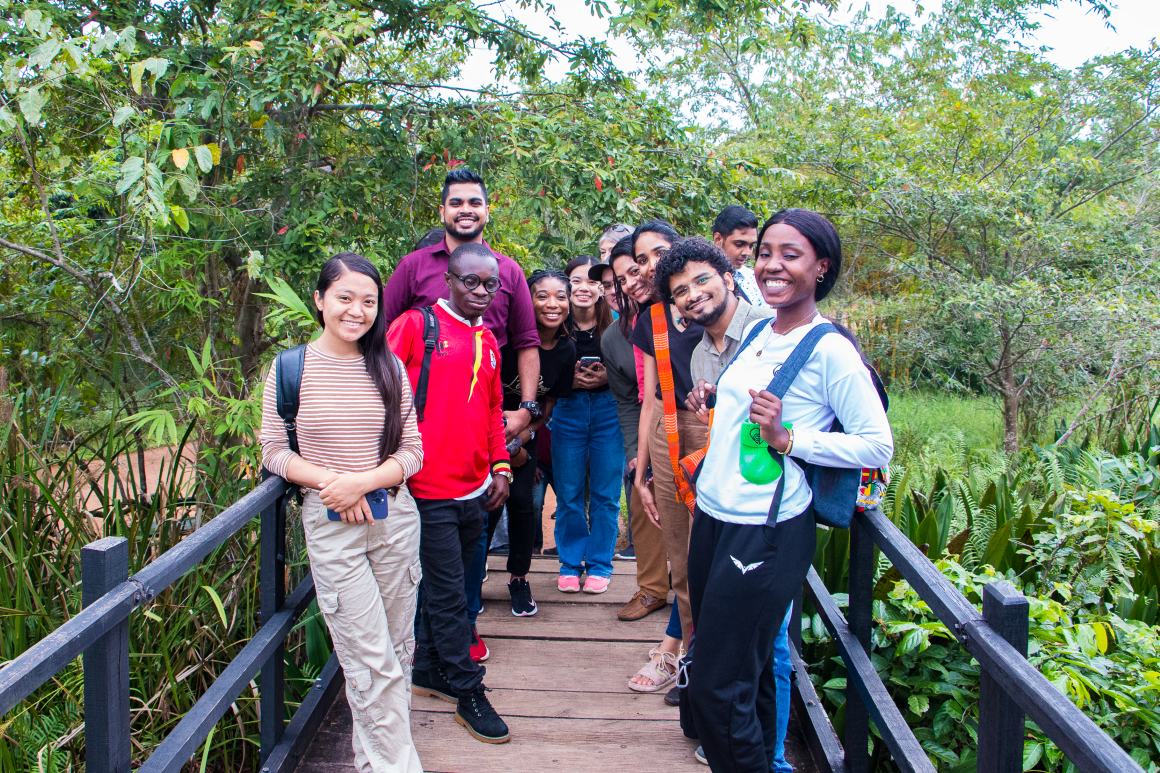Published on:
27 March 2017
Share this:
An integrated watershed approach to flood risk management addresses flood risk holistically and can lead to positive outcomes across multiple sectors. The Ayubia National Park (ANP) covers over 7,000 acres (3,000 hectares) in the Galliat region in Khyber Pakhtunkhwa, a northwestern province of Pakistan, and is located within the moist temperate zone of the Himalayan-Karakoram-Hindu Kush (HKH) mountains. The area is responsible for 70%-80% of water in the Indus River, which originates from snow, rain and glacial melt in the Himalayan Mountains. The coniferous trees and vegetation in the park improve water infiltration, reduce surface runoff, and recharge groundwater and rivers as the water flows downstream. The park is also a prominent tourist destination and important to the local economy.
The impacts of a changing climate, deforestation and unplanned development in the area have led to water shortages, landslides and village flash floods, and a destabilization of water flows in the region. In 2008, WWF-Pakistan began an integrated watershed management project, with funding from the Coca-Cola Foundation, to address these impacts and provide alternative livelihoods. The project had widespread community support from the government, community organizations, academia, village residents, religious leaders and tourists.
The project included several of the villages surrounding the park. Working with community groups, WWF-Pakistan sought to address root causes of flood risk and focused on upstream water retention and slope stabilization strategies. In addition, the group worked to detain and divert flood flows and improve community access to water. Over a five-year period, community groups
-planted 60,000 indigenous pine species (Pinus wallichiana, Cedrus deodara, Aesculus indica) and 14,400 fruit trees
-improved 3,295 square meters of agricultural land through field terraces
-implemented sustainable grazing practices on 185 acres (75 hectares) of farmland
-planted 39,200 plants, mostly Salix, Populus and Robinia species, over 1,500 square meters of mountain land and along farms and streams
-built brushwood retaining walls for slope stabilization
-constructed 763 cubic meters of check dams and 3,440 cubic meters of flood control spurs around villages
These techniques helped restore vegetation and tree cover, recharged groundwater, improved water retention, helped stabilize slopes, and reduced landslides and flood risk. WWF also provided villagers with partially subsidized solar stoves to reduce their use of wood for fuel, in turn reducing demand for timber and associated deforestation. To address water supply shortages, WWF introduced rooftop rainwater harvesting and sustainable irrigation schemes at the household level to support livelihoods and increase access to water. WWF-Pakistan also conducted regular volunteer waste cleanup activities around the natural springs and protected 10 springs through fencing.
This integrated flood risk management project resulted in additional community benefits. The initiative reduced the risk from floods and landslides, which previously limited visitor access to the park; allowed the tourist economy to be revived; and reduced pressure for farmers to migrate to urban centers. The project also improved the living standards of women, who are traditionally involved in water and firewood collection. Rainwater harvesting and solar stoves reduced the time required for these tasks and limited exposure to hazards such as smoke inhalation. The community collaborations spawned by the watershed project also created opportunities for womens groups to form. WWF provided training to these womens groups on kitchen gardening, running nurseries for tree saplings, and rearing poultryall of which provided options for alternative livelihoods. The project also developed and distributed educational material for the general public, schoolchildren and tourists to educate about the importance of the watersheds and nature-based flood risk management.
This case is adapted from the following sources:
Saleem Shaikh and Sughra Tunio, Anti-erosion Effort Stops Pakistani Farmers Abandoning Mountain Fields, Thomas Reuters Foundation, August 15, 2014, last accessed May 6, 2016, http://www.trust.org/item/20140814152515-7hnau/?source=jtOtherNews1.
Coca-Cola Journey Pakistan, Integrated Development in Ayubia National Park, December 22, 2014, accessed May 4, 2016, http://www.coca-colajourney.com.pk/stories/integrated-development-in-ayubia-national-park.
WWF-Pakistan, Improving Sub-Watershed Management and Environmental Awareness in the Ayubia National Park, accessed May 4, 2016, May http://wwf.panda.org/who_we_are/wwf_offices/pakistan/index.cfm?uProjectID=PK0115.



